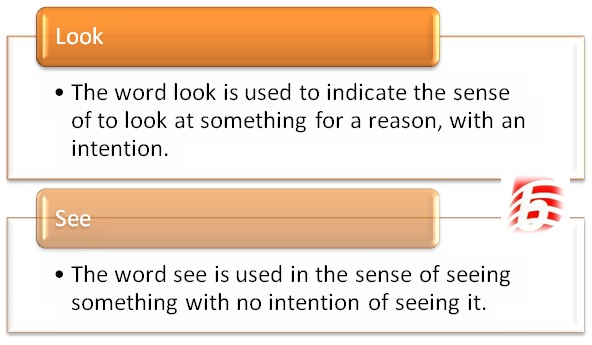Look vs See
Although the words “look” and “see” may appear similar in meaning and connotation within the English language, there is a clear difference between them. They should be used distinctly and are not interchangeable. “Look” can function as both a verb and a noun, while “see” is only a verb. Moreover, there are numerous phrases that feature both “look” and “see,” such as “as far as I can see,” “as I see it,” “look one’s age,” and “look before you leap.”
Meaning of Look
The term “look” is used to signify the act of looking at something intentionally or with a specific purpose. For instance, the sentences “Look at that strange animal” and “Look at the drawings I made last night” both utilize “look” to indicate observing something with intent. Sometimes, “look” is employed in an emphatic sense, such as in “Look at this shot!” where the speaker is excited about a baseball shot executed by a player. Additionally, “look” can be used to denote concentration or focus, as in the sentence “Look at me.”
Meaning of See
Conversely, “see” is used to express the act of observing something within one’s sight range without any specific intention or purpose. This is the main distinction between “look” and “see.” For example, in the sentences “Did you see the girl?” and “I saw you today in the park,” the word “see” is used to indicate unintentional observation. Furthermore, “see” can be used to convey the sense of observation, as in the sentence “I see the difference.”
Key Takeaways
- “Look” conveys observing something intentionally or with a specific purpose, while “see” indicates unintentional observation.
- “Look” can be used in an emphatic sense, whereas “see” can imply observation.
- “Look” may also denote concentration or focus, while “see” does not have this connotation.
